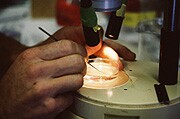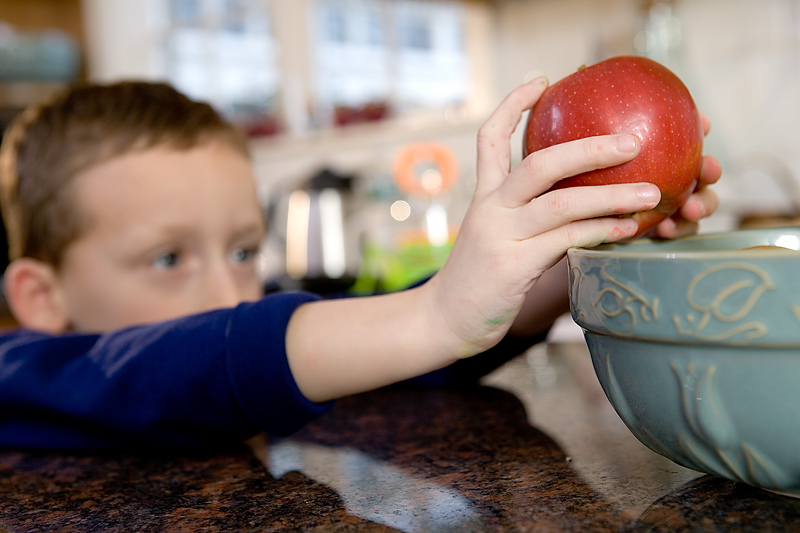
WEDNESDAY, May 16 (HealthDay News) — Researchers report that a new DNA test may be able to spot an increased risk of autism in children as young as 6 months old.
The genetic screen, called ARISk, is designed for babies and toddlers who have a sibling with autism, a developmental disorder characterized by impaired social interaction and repetitive behaviors. The new test found 57 key gene variations that were associated with the condition in more than 1,000 families.
“This is the first time such a huge study has been performed on individuals with autism, discovering what other studies statistically could not detect,” explained study author Dr. Francois Liebaert, vice president of research and development at IntegraGen SA, the French company that developed the test. The research team looked at a wider combination of gene variations than previous research has, he noted.
Liebaert pointed out that autism is considered “genetically complicated” because there is no single chromosome or gene that is responsible for the development of the disease.
In theory, the test could help speed up assessment and intervention for at-risk siblings, and potentially improve long-term outcomes. However, not all autism experts are convinced that the test results are reliable enough to form the basis for treatment decisions.
Studies have shown a strong genetic basis for autism. Siblings of children with autism are believed to be at greater risk; in the study, boy siblings had a 26 percent greater risk while girl siblings had a 10 percent greater risk of developing some form of the disease.
The U.S. Centers for Disease Control and Prevention estimates that one child in 88 is diagnosed with autism, Asperger’s syndrome or a related autism spectrum disorder by the age of 8.
The research behind the development of the screening test was to be presented Wednesday during a news conference at the International Meeting for Autism Research in Toronto. The study involved about 1,100 families with more than one child diagnosed with some form of autism, including nearly 2,000 siblings with autism and 600 siblings who did not show signs of the disorder.
Children found to be at greater risk would be referred to an autism specialist for further evaluation and behavioral intervention. Those at lower risk would still be monitored for signs of the disease.
Dr. Andrew Adesman, head of developmental and behavioral pediatrics at Steven and Alexandra Cohen Children’s Medical Center of New York, in New Hyde Park, said he has concerns about the value of the test: “Families looking for potential insight may get falsely worrisome or falsely reassuring information,” he said.
Adesman noted that data from the study showed a significant number of children testing positive for autism will end up not having the disorder, and a significant number of children with a non-worrisome test will also end up having the disorder.
Clinical assessment will be necessary, no matter how the test turns out, he added. “If a child clinically looks good but has a bad test, all you’d do is watch the child more closely anyway,” he said.
ARisk is only available through physicians. DNA samples are collected with a cheek swab and sent to a lab. The results are returned to the doctor two to four weeks later.
Because the test involves swabbing a cheek, it would not be possible to use this technology before birth to determine whether a fetus has a higher risk of autism, Liebaert noted.
The list price of the test is $2,900, but parents may pay less depending on their insurance coverage. IntegraGen has a program to provide the test to those with no insurance or with limited resources, said Larry Yost, the firm’s general manager.
Liebaert is conducting research now to determine how this genetic assessment might apply to children who don’t have a sibling with autism. The test might be used, for example, if symptoms of autism were suspected. He said he expects to compile early results later this year.
Because this study was presented at a medical meeting, the data and conclusions should be viewed as preliminary until published in a peer-reviewed journal.
More information
Go to the National Autism Association for more on autism.

